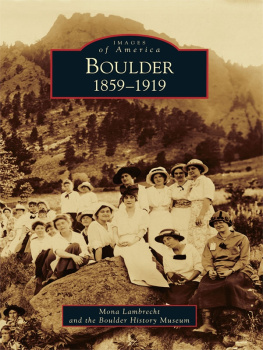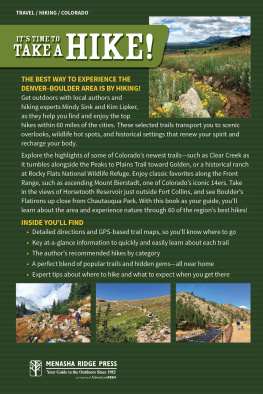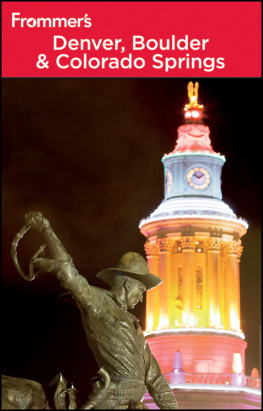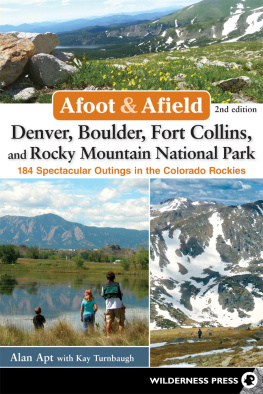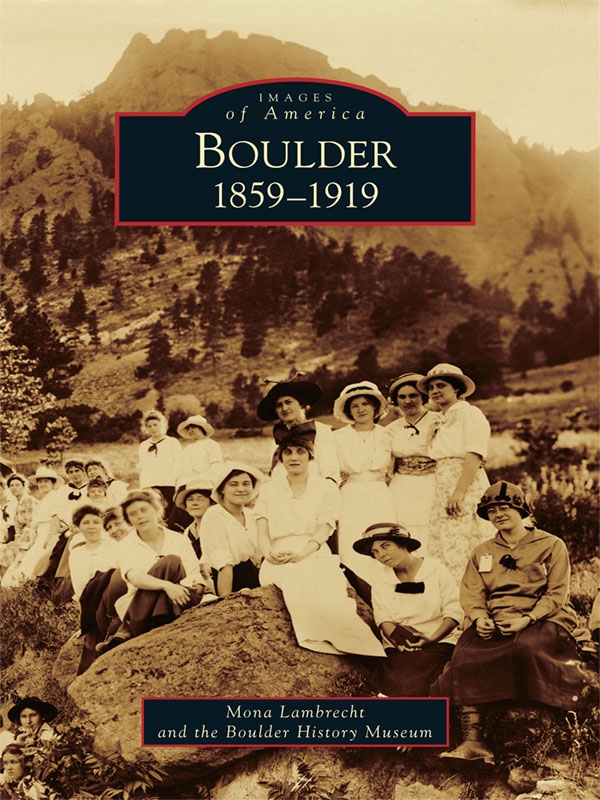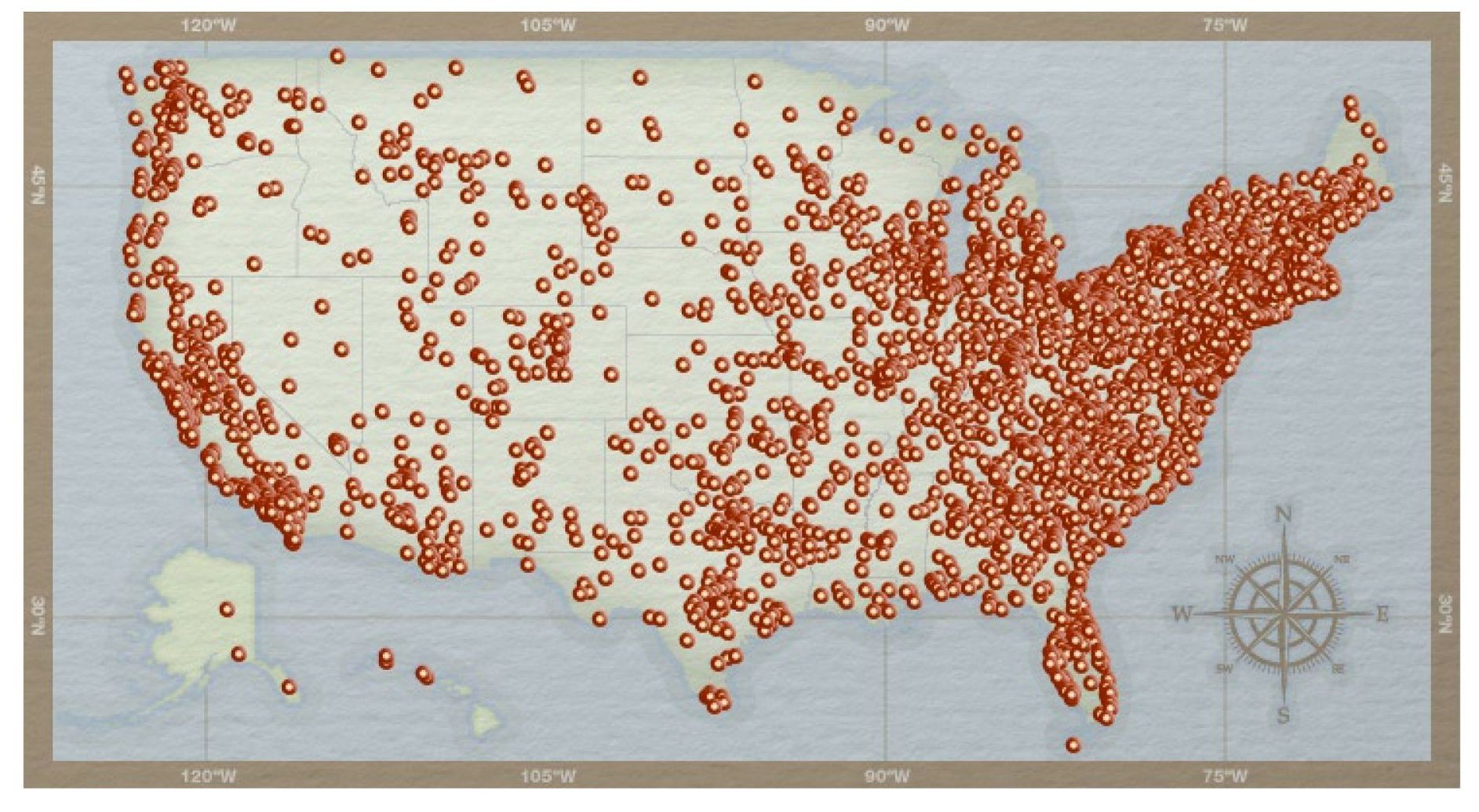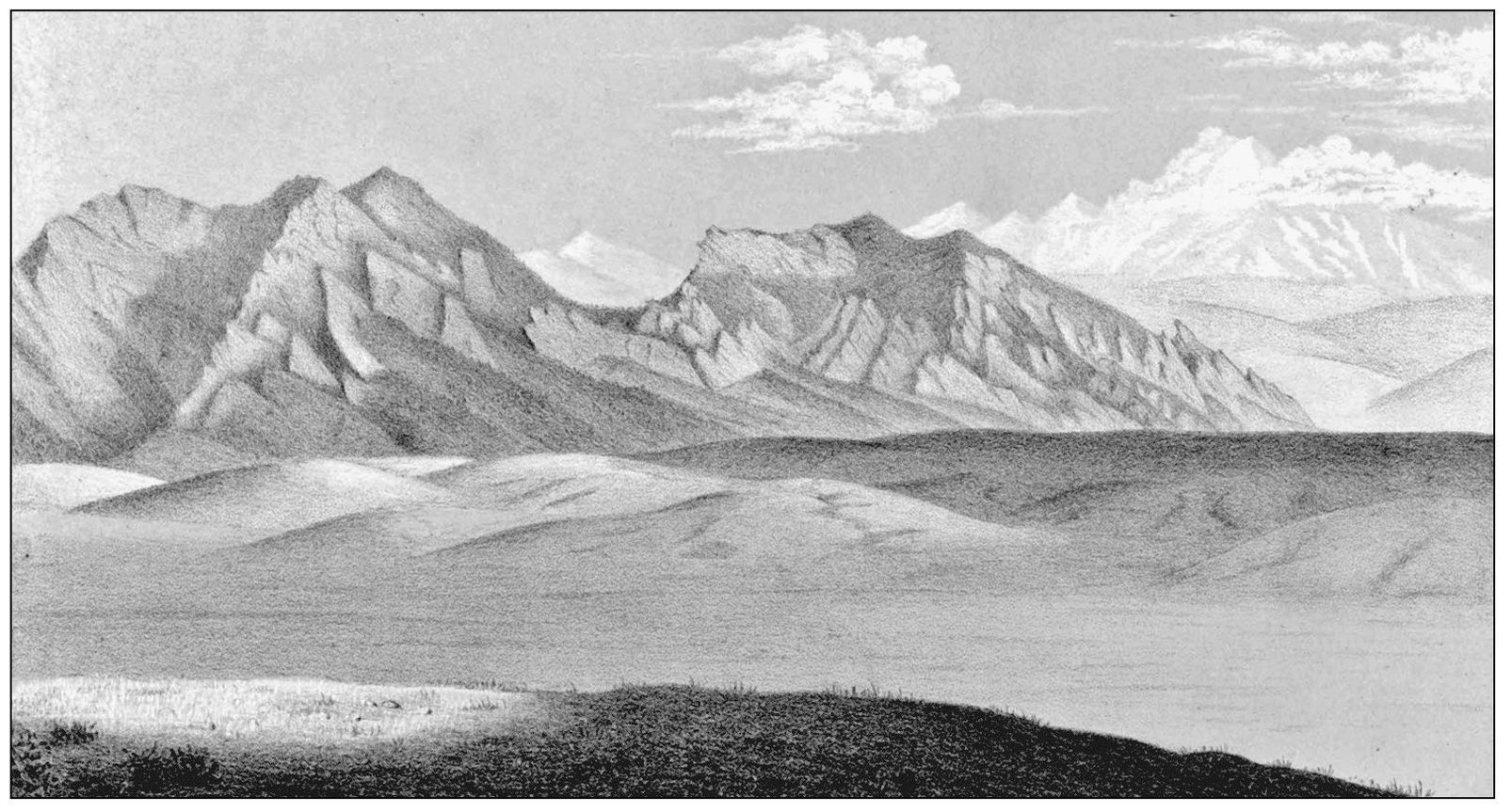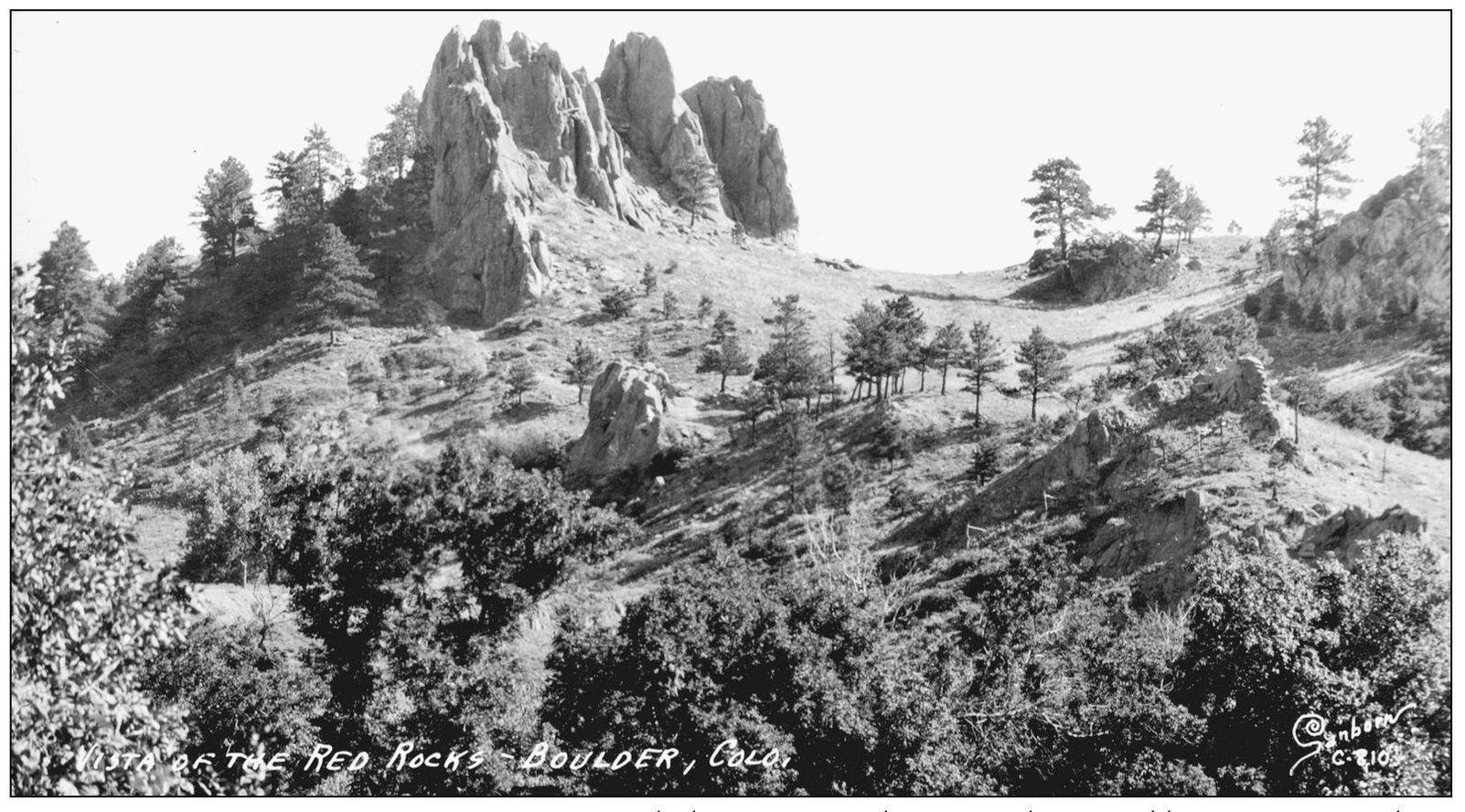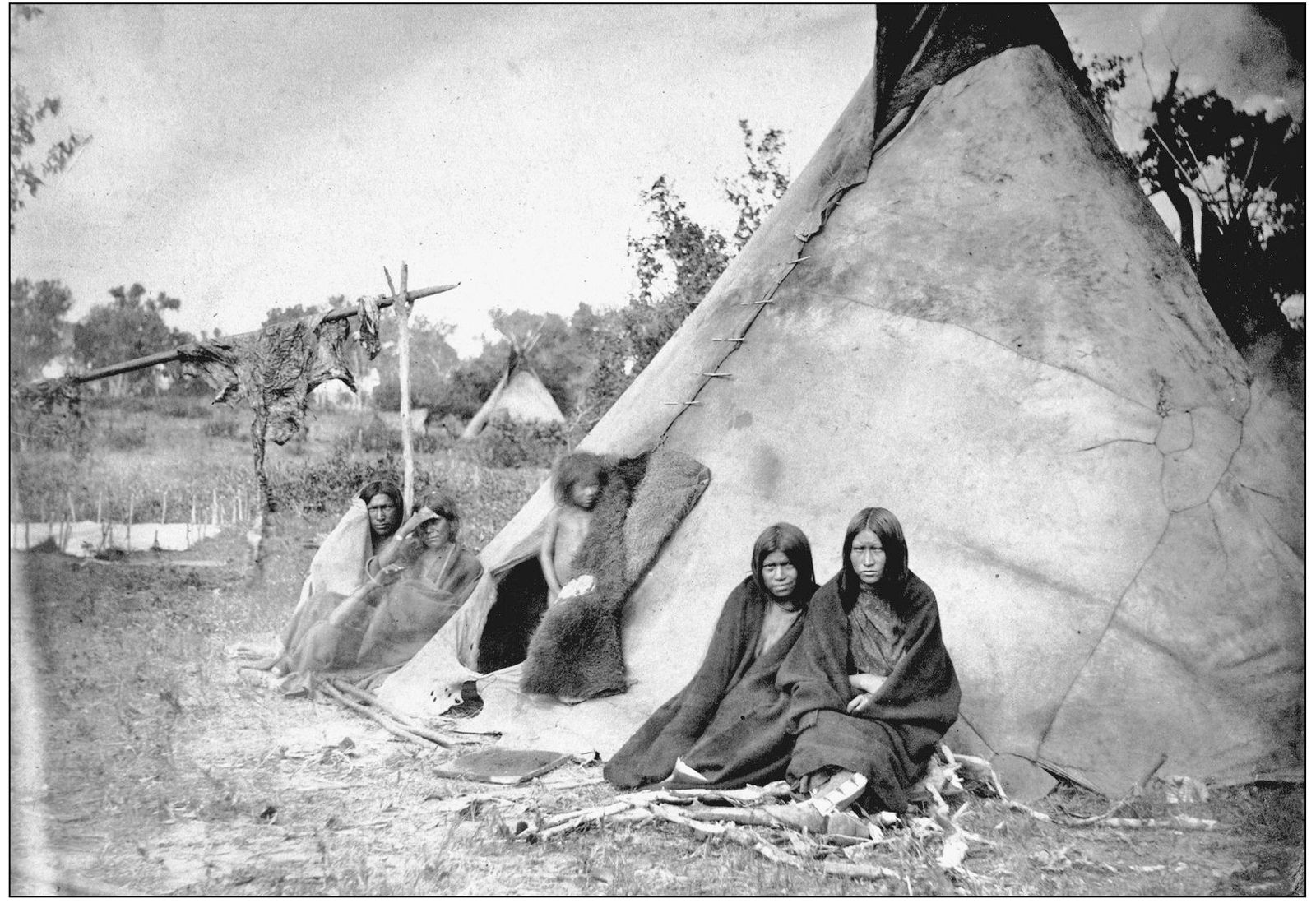The book could not have come together without a partnership with the Boulder History Museum. Excited to take on this collaborative project, the museums executive director, Nancy Geyer, allowed the photograph usage for this book, which will compliment the museums goals of exploring and presenting Boulders unique history. Thank you to Julie Schumaker for all the digitizing and to Peter Lundskow, who contacted Todd Stockwell at the Indiana State Museum about his farming expertise.
The Carnegie Branch Library for Local History in Boulder also played an important roll in this book. As the librarys extensive collection grows through gracious donations of photographs and documents, it remains a constant source for fascinating research. Thanks to Wendy Hall, Marti Anderson, and Mary Jo Reitsema for all your guidance, suggestions, and knowledge. Thanks to the Boulder Genealogical Society, the Denver Public Library, and the Colorado Historical Society for the use of photographs and maps. Unless otherwise stated, all the photographs used in the book are credited to the Boulder Historical Societys collection.
A special thank-you goes to Silvia Pettem for sharing your vast knowledge of Boulders history and keeping me on track. And a final thank-you to Rich von Sneidern, Horst and Gudrun Lambrecht, and Margie and Shannon Mayes for all your support in helping me bring this project together.
In addition to the bibliography at the back of the book, detailed citations of the primary source and unpublished collections I used are too numerous to include. Many of these sources include census records, city directories, maps, newspapers, yearbooks, deeds, advertisements, oral histories, and unpublished manuscripts.
BIBLIOGRAPHY
Anderson, M. M. The Mining Camps: Salina and Summerville. Boulder, CO: Junction House, 2005.
Bean, Geraldine B. Charles Boettcher: A Study in Pioneer Western Enterprises . Boulder, CO: Westview Press, 1976.
Coel, Margaret. Chief Left Hand, Southern Arapaho. Norman, OK: University of Oklahoma Press, 1981.
Crossen Forest. The Switzerland Trail of America. Boulder, CO: Pruett Publishing Company, 1962.
Galey, Mary. The Grand Assembly. The Story of Life at the Colorado Chautauqua. Boulder, CO: First Flatiron Press, 1981.
Gladden, Sanford Charles. The Early Days of Boulder, Colorado. Boulder, CO: privately printed, 1982.
. Hotels of Boulder, Colorado from 1860. Boulder, CO: Johnson Publishing Company, 1970.
History of Clear Creek and Boulder Valleys , Colorado. Chicago: O. L. Baskin and Company, 1880.
Meier, Thomas J. The Early Settlement of Boulder: Set in TypeCast in BronzeFused in Porcelain; It Aint Necessarily So. Boulder, CO: Boulder Creek Press, 1993.
Noel, Thomas J., Paul F. Mahoney, and Richard E. Stevens. Historical Atlas of Colorado. Norman, OK: University of Oklahoma Press, 1994.
Pettem, Silvia. Boulder: Evolution of a City . Boulder, CO: University Press of Colorado, 1994.
. Legend of a Landmark. A History of the Hotel Boulderado . Missoula, MT: Pictorial Histories Publishing Company, Inc., 1997.
Smith, Duane A., and Ronald C. Brown. No One Ailing Except a Physician. Medicine in the Mining West, 1848-1919 . Boulder, CO: University Press of Colorado, 2001.
Smith, Phyllis. A Look at Boulder from Settlement to City . Boulder, CO: Pruett Press Publishing Company, 1981.
West, Elliott. The Saloon on the Rocky Mountain Mining Frontier. Lincoln, NE: University of Nebraska Press, 1979.
Find more books like this at
www.imagesofamerica.com
Search for your hometown history, your old
stomping grounds, and even your favorite sports team.
One
THE BIRTH OF A SUPPLY TOWN
Rumors of gold in the western Kansas Territory (around Denver) enticed a group of men from Nebraska to venture west. The actual arrival date of the team, led by Capt. Thomas Aikens, is not clear, but by November 1858, a small camp had formed at the mouth of Boulder Canyon. Chief Niwot and the Southern Arapaho had seasonal campgrounds in the Boulder Valley, and none wanted the white men setting up camp nearby. Knowing the cycle of devastation these men and future settlers could bring, Niwot expected the men to leave the area the following spring, but the discovery of gold would change everything.
The Aikens party settled just north of the Kansas-Nebraska border on the 40th parallel (Baseline Road). Despite being squatters in Nebraska Territory, on February 10, 1859, sixty-one men, several from the original Aikens party, signed the Article of Organization, forming the Boulder City Town Company.
Within Boulders first years, most men attempted mining, while others knew that profits would come from supplying the miners. Despite being called a hideous collection of frame houses on a burning plain by English traveler Isabella Bird in 1873, Boulders businesses grew, the town became the proud location for the states first university, and the population soared to more than 3,000 people by the end of the decade.
BOULDER VALLEY AND THE FIRST SETTLERS. Before the first permanent white settlers arrived, the Front Range and Boulder Valley (above) were the winter campgrounds to bands of the Southern Arapaho and were likely explored by trappers, traders, and soldiers from the military forts along the South Platte River. During the early winter of 1858, Alfred A. Brookfield (below, left) and Capt. Thomas Aikens (below, right), were among the first white men to set up a permanent camp at the mouth of Boulder Creek. Aikens, a farmer from Maryland, led the exploration team to the Boulder Valley and later settled in Valmont. Brookfield, a grocer and Nebraska City mayor, became the first elected president of the newly formed Boulder City Town Company. (Illustration above courtesy Denver Public Library, Western History Collection, Alfred Edward Mathews, Z-8824.)
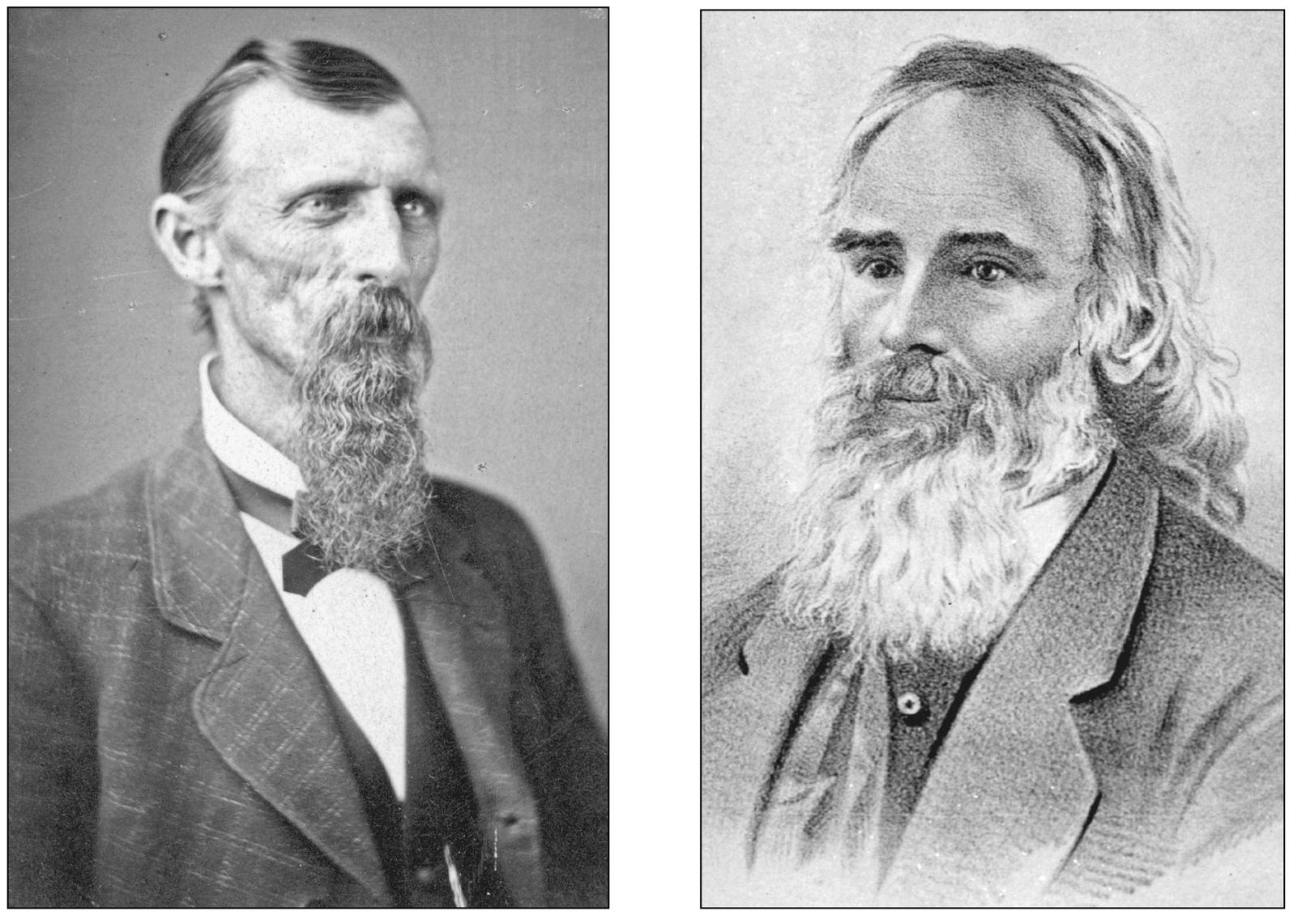
FIRST CAMP NEAR RED ROCKS. Historians believe Capt. Thomas Aikens and his men set up their tents near the confluence of Sunshine and Boulder Creeks. This area is near the mouth of Boulder Canyon and below the rock outcropping known as Red Rocks. The general location has historically been associated with the Aikenss camp, but the exact location of the camp site is unknown.
SOUTHERN ARAPAHO LANDS. Thomas Aikenss group arrived in the Boulder Valley as the winter of 1858 approached, just as Chief Niwot (also known as Chief Left Hand) and his people were settling into their winter campgrounds. Wary of the white mens intentions, Niwot received assurance from Aikens that they would only stay the winter then prospect in the mountains the following spring. (Courtesy Denver Public Library, Western History Collection, X-32133.)

